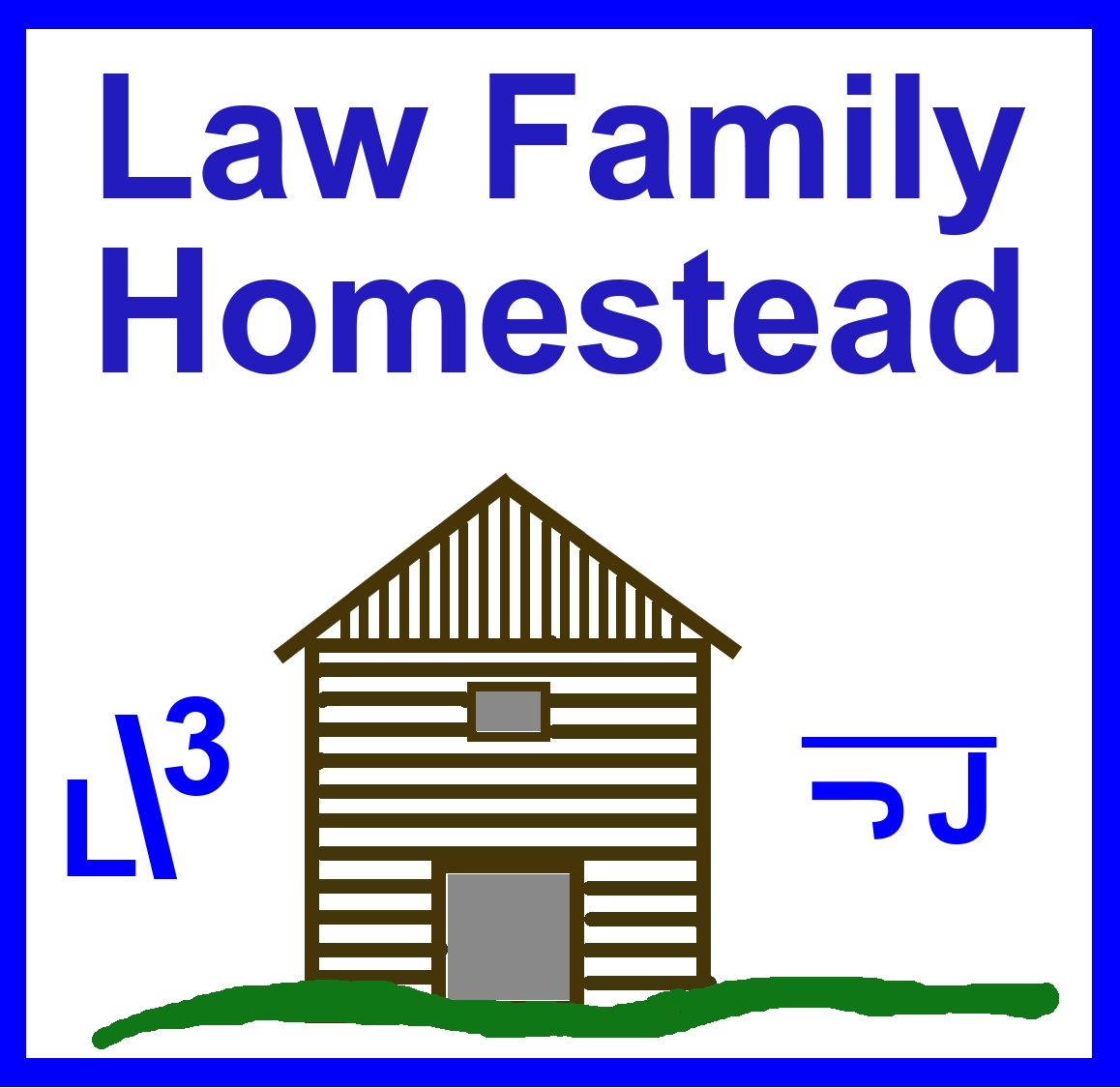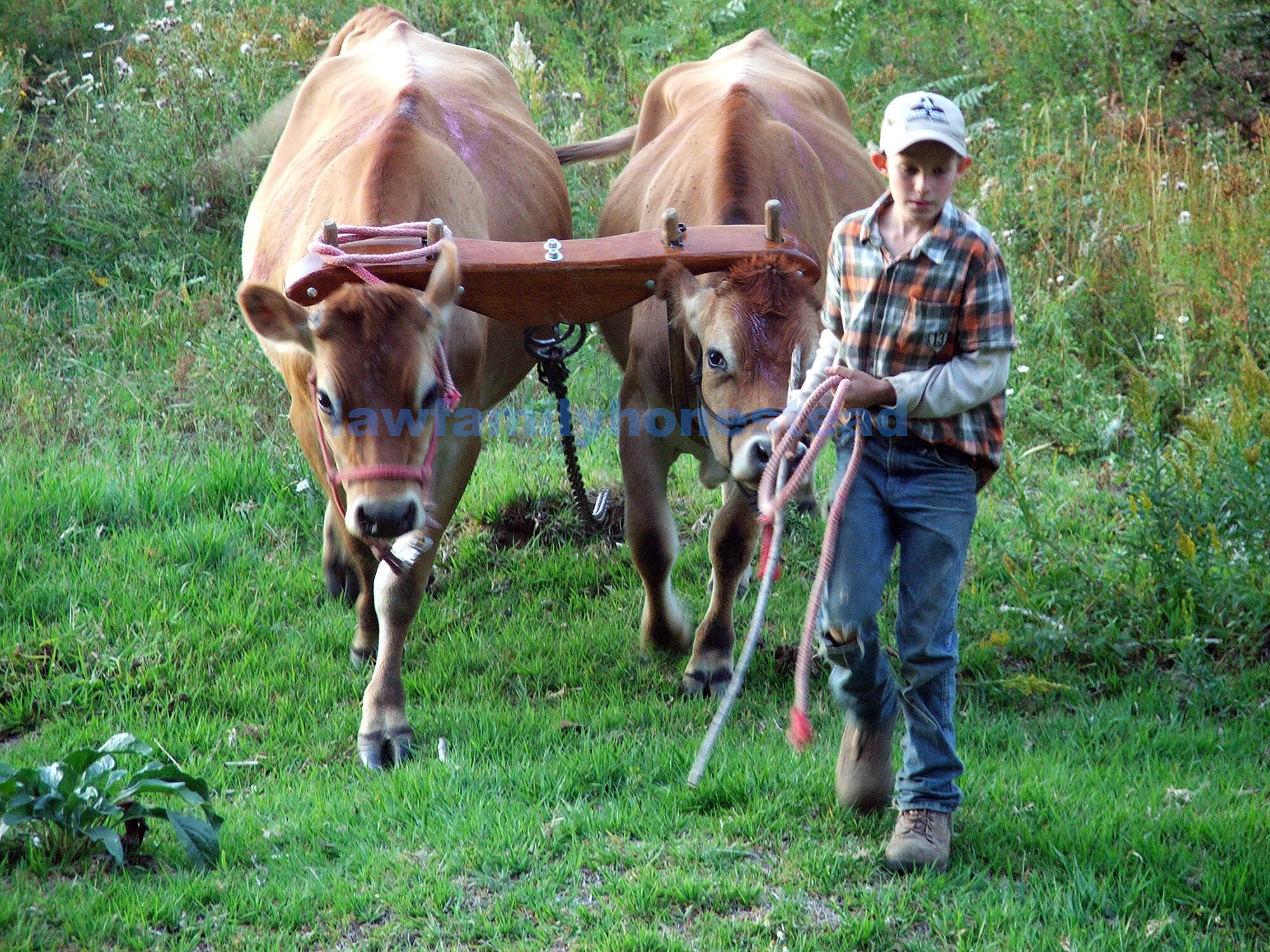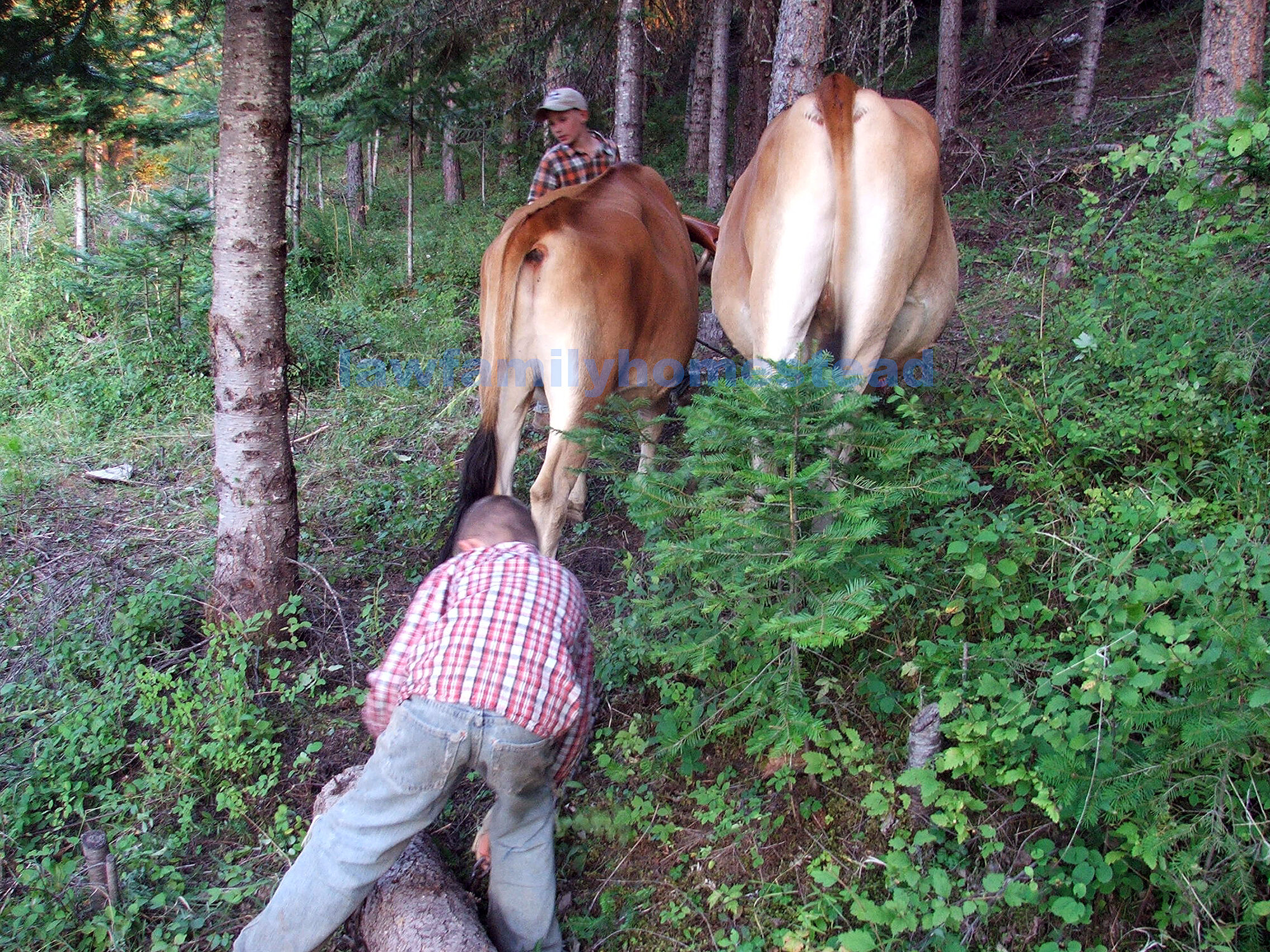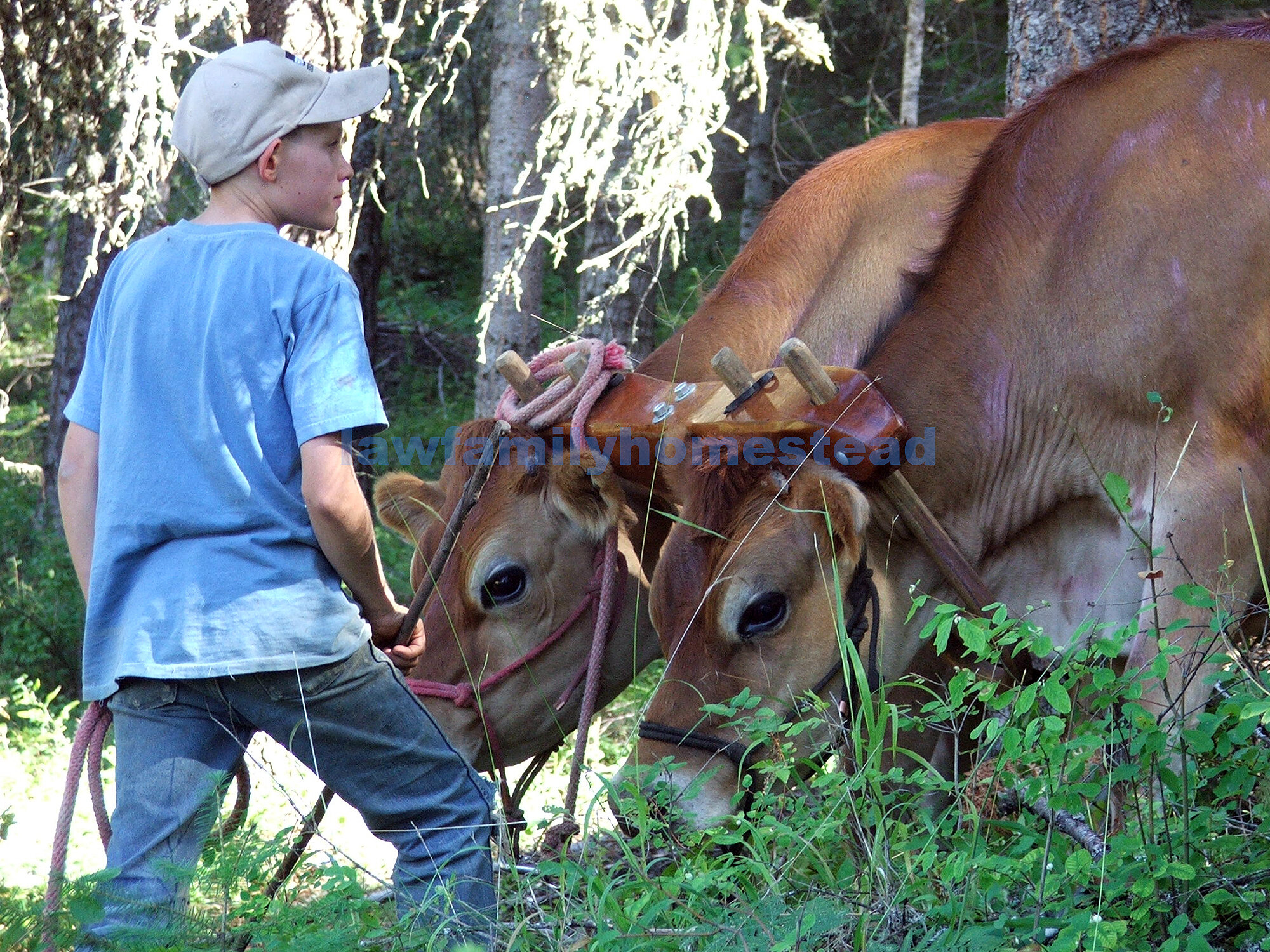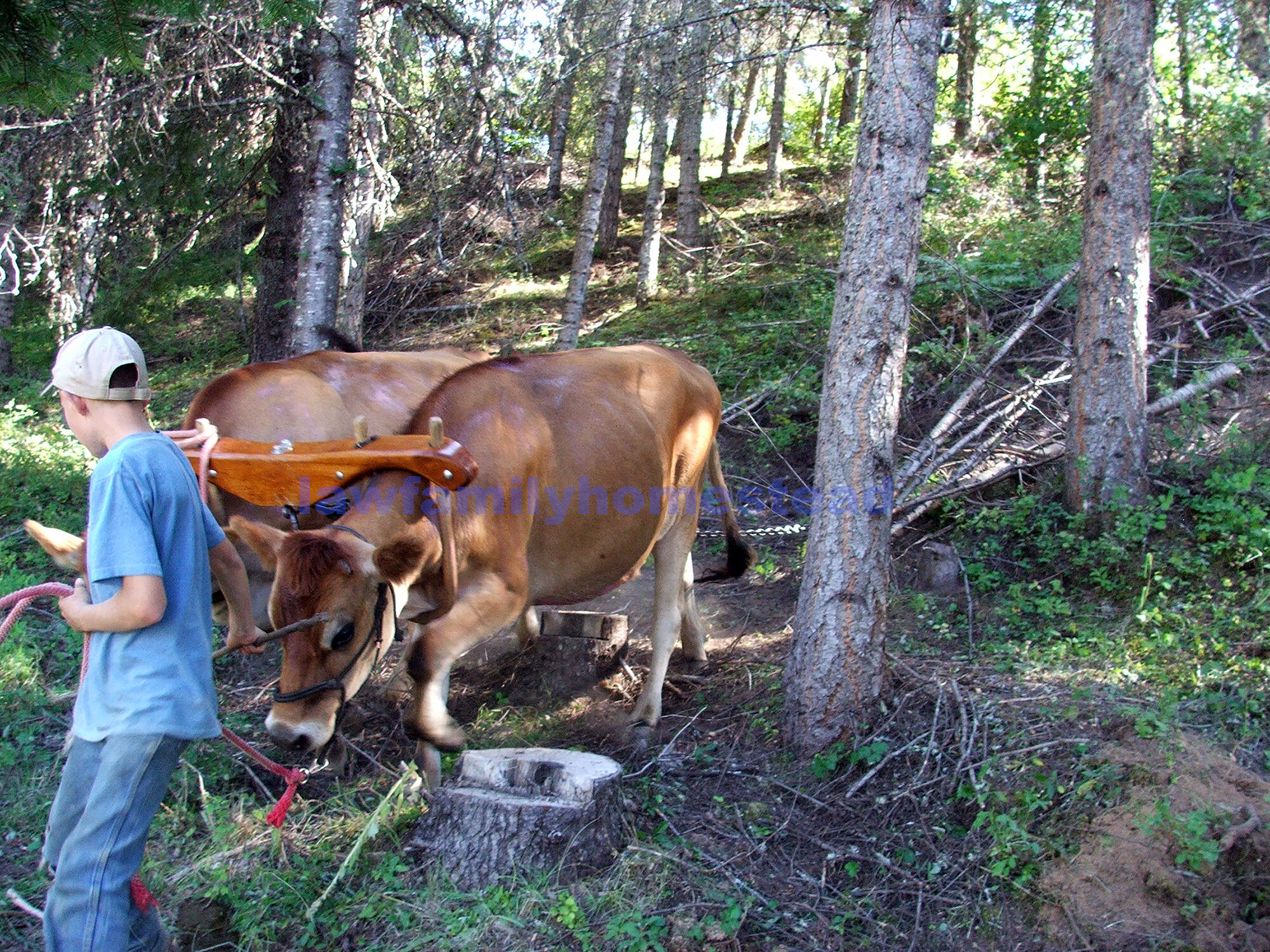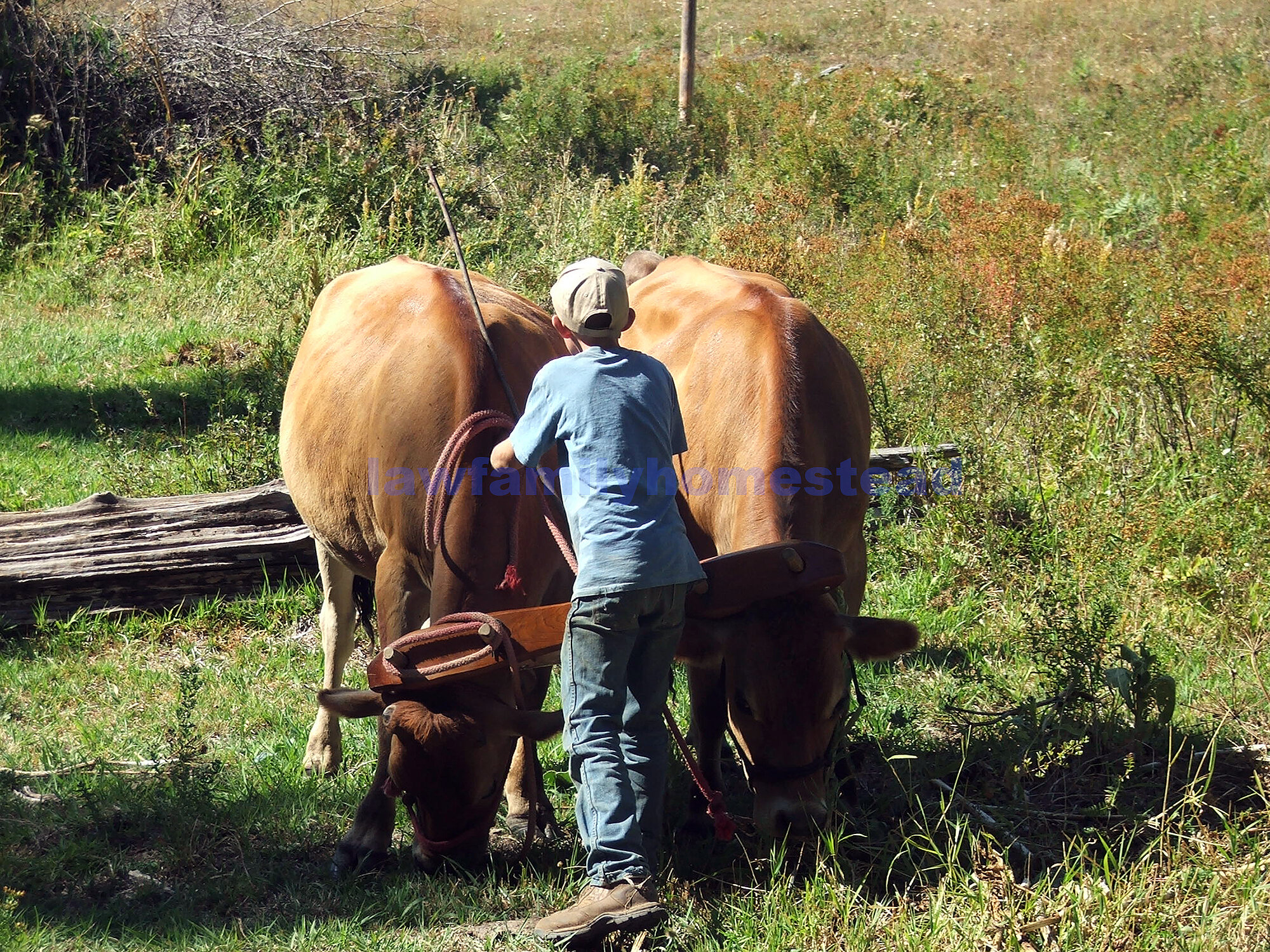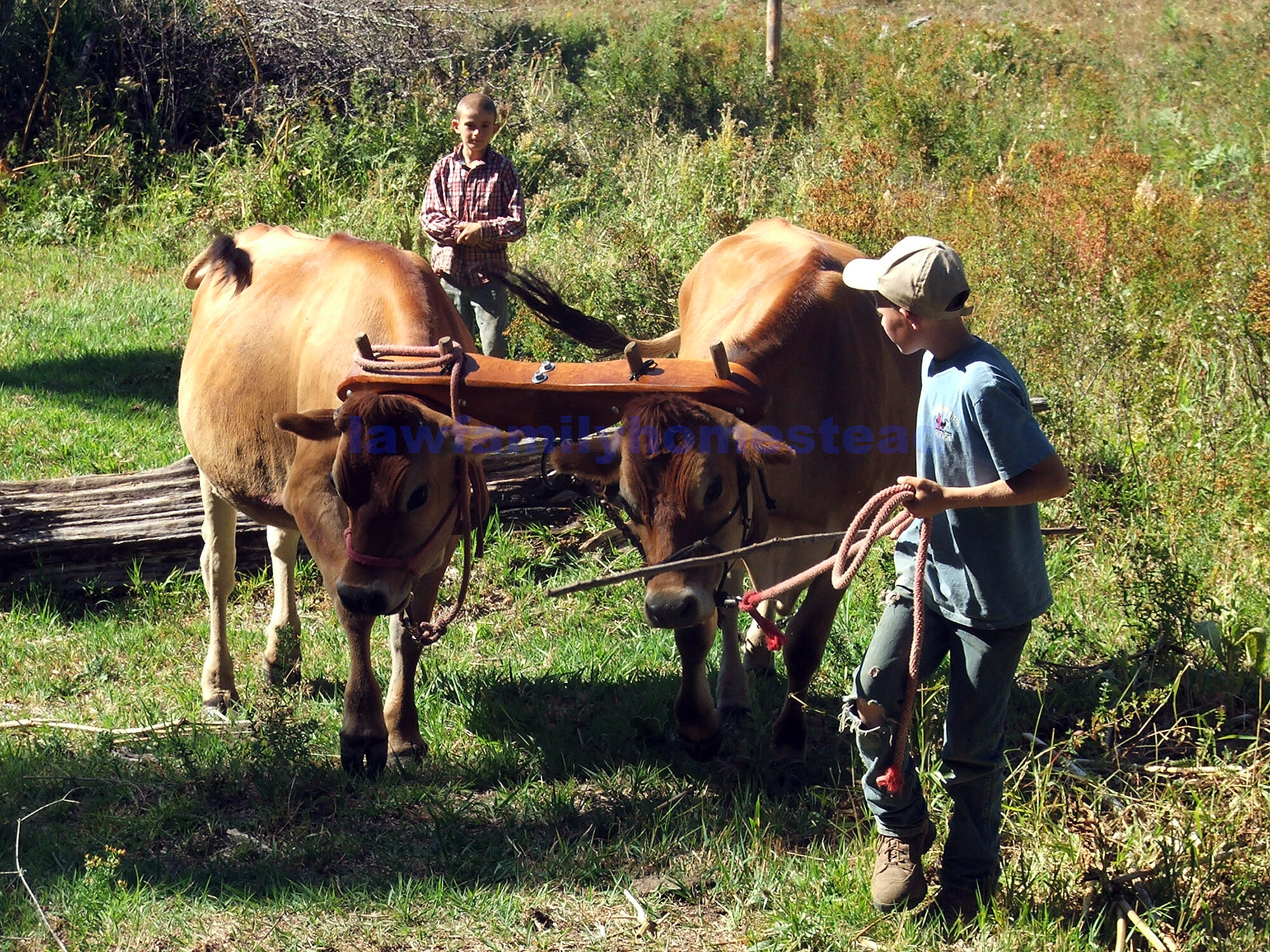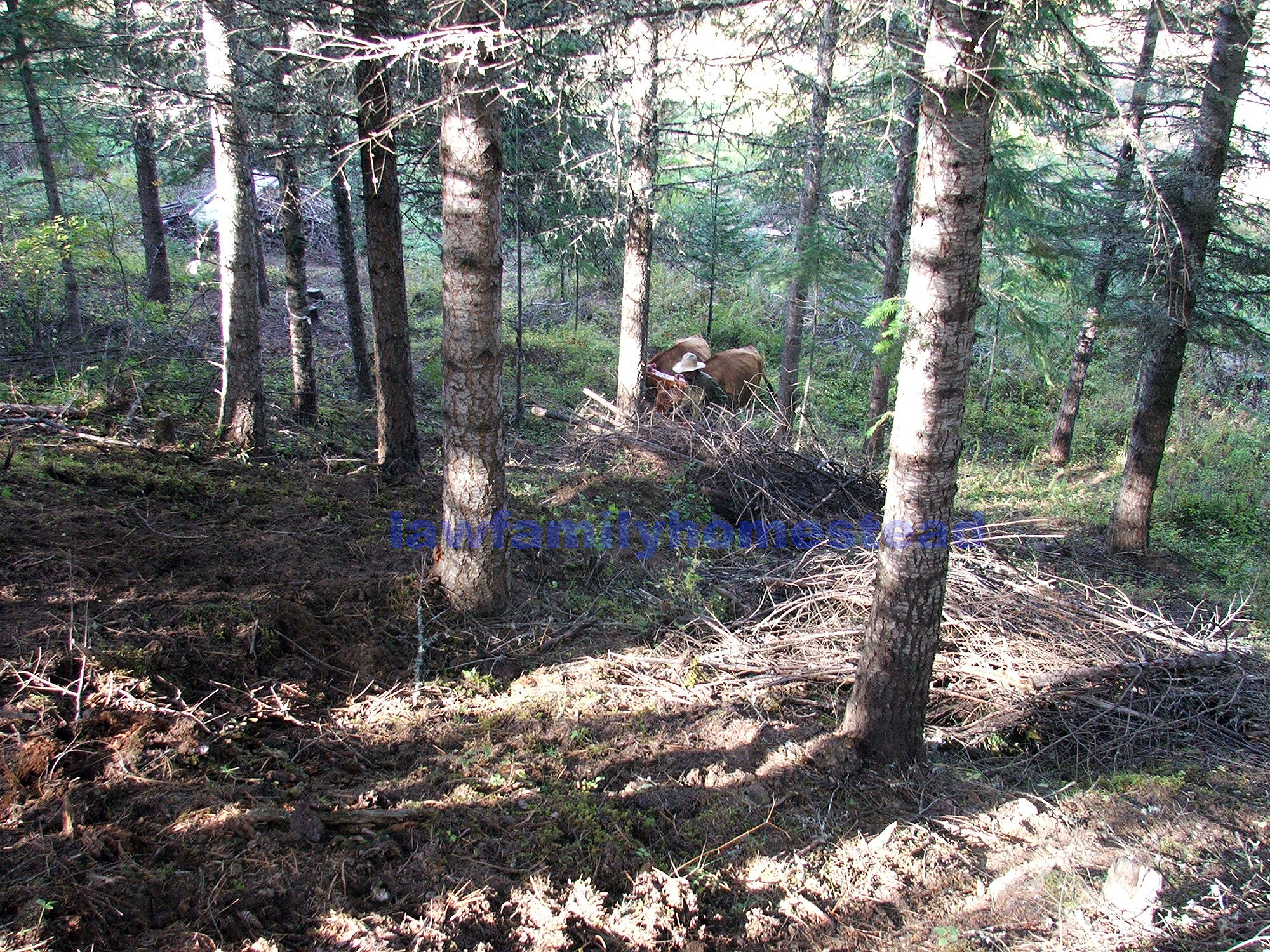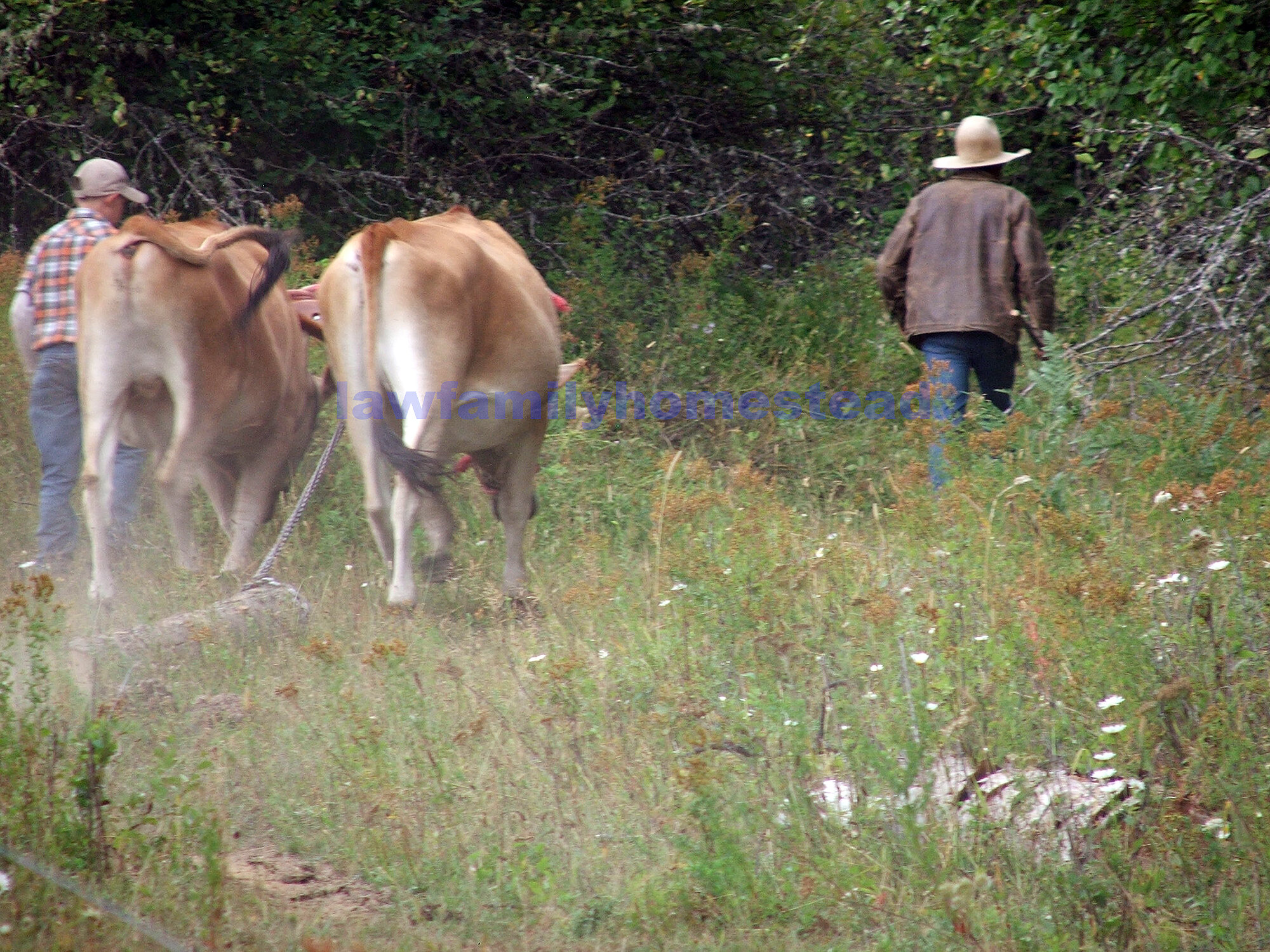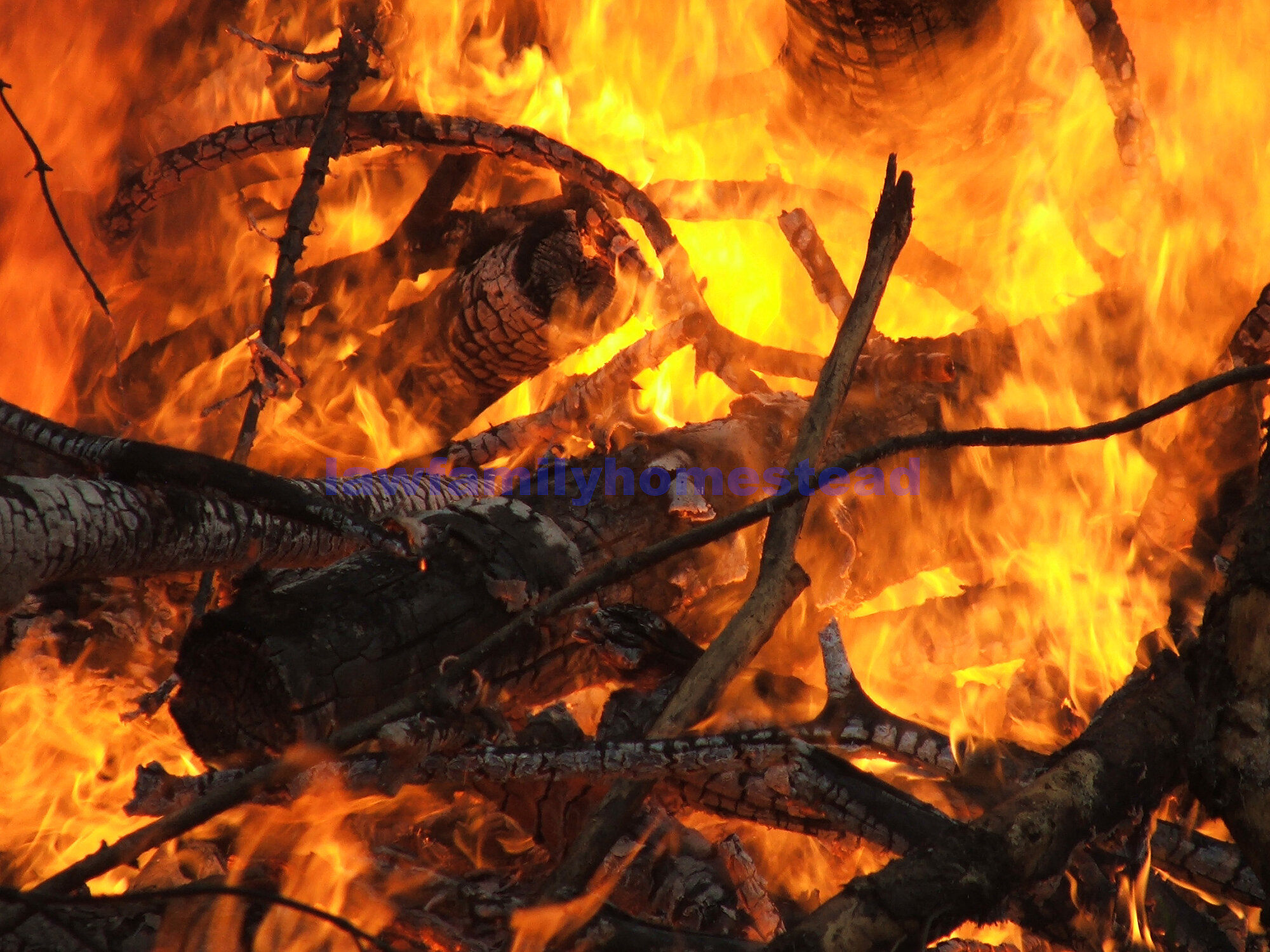When fall, and the rainy season, arrive in Idaho fire restrictions are lifted and the larger timber companies begin burning their slash piles. It also means small land owners may burn their smaller slash piles.
Over the last several years we have slowly cleaned up and thinned out the small wooded area we have on our homestead. We have combined fire mitigation and tree thinning management ideas so more sunlight filters to the forest floor for new tree growth and grass to have a chance to grow. We also cull dying and sub-par trees so healthy, straight trees have a better chance to grow and reproduce.
With this reasoning in mind, we have slowly removed trees and used them for building projects around the place such as our hand-hewn log barn, (look it up in the archives). When the children and I get the chance, we start piling all the branches and brush left over from the thinning operation, and make slash piles in key places so live trees are not damaged in the burning process. Then in the fall and winter months we burn these piles.
After most of last summer off, CW wanted to use the two-year-old ox team by himself to start clearing brush and piling slash. I told him he had to take one of his brothers along to help him, and then, as an afterthought, I went along to take pictures.
We have found the ox team indispensable for working in the woods. They are slow, methodical, and careful. We use them for both light brush clearing and heavier log removal.
CW maneuvers the team into place and JW1 hooks the chains. Logging with oxen also leaves a small footprint; no heavily disturbed or compacted soil. The only thing you might notice, if you were to look hard enough, after this logging operation is complete is, a bit of fertilizer left behind.
Patiently waiting for the chains to be hooked up, again.
I don't think the steers actually had to put forth a whole lot of effort on the loads they pulled, but it was a good confidence builder for both boys, and beasts.
The pitch pine log you see lying behind the team, has been there for years. It was partially decayed into the ground, and was considered a permanent fixture by some of us. However, it was right in the path where CW wanted to haul out his brush loads. He was getting tired of having to go all the way around it and removing it would allow him and the team a straight pull with their load.
So CW and JW1 dug around the end of the rotted log until they had a space big enough to run the chain under and around the log. CW hooked the team to it and told them to "get up". They pulled and to my surprise the log split in half lengthwise and the team pulled that half to the landing area. The boys brought the team back, hooked them to the other half and dragged that away also. The way was now clear for a smoother log hauling operation.
When Kit has time off he manages the team through the more technical difficulties of getting larger logs down steeper slopes. The path was cleared of brush, so he could focus on going in and pulling the 10- to 16-inch diameter logs out.
Here Chestnut and Walnut watch as the guys prepare a future firewood log for pulling. I wonder sometimes what goes through their minds while they are waiting. "Piece of cake," or "You GOTTA be kidding!"
It's really hard to portray the slope angle in a picture. This is about a 50 percent (not degree) slope.
Logging with oxen always has its own set of challenges. Here the team had to go down one bank, across our pond outlet, and up the other bank.
Of course flat ground makes everyone happy. Even though it is sometimes dry out, we aren't really hampered by the risk of fire, due to the fact that there isn't any steel involved here, except maybe the chain but that is minimal, and the fact that in this part of Idaho there are very few rocky services.
Once the logging is finished in an area the brush is all cleared, the limbs are piled, and it is slash pile burning time! Burn day always draws a high level of participation from our predominantly male household. It's the one day they are allowed to throw sticks on the fire to their heart's content.
Inferno! Well not quite, but we did get this particular slash pile a little hot!
A few well placed buckets of water administered by granddaddy kept it from burning the live needles of the surrounding trees. PW was our one-man bucket brigade.
We clean an area roughly 30 to 40 feet wide around each brush pile of any small twigs, brush, stumps and such.
Someone first purchasing timber ground is usually drawn by the beauty and seclusion of the property. However, the buyer needs to realize they have purchased a resource that can pay future dividends if managed correctly. Small land owners need to look for creative ways of managing their wooded acreages. Fire mitigation should be on the top of everyone's priority list. Without it the timber investment is threatened. With proper forestry management, the productivity of the woodlot is increased, for building projects, timber sales, firewood use, and the health and diversity of the forest and forest floor and to enhance the beauty of the property.
